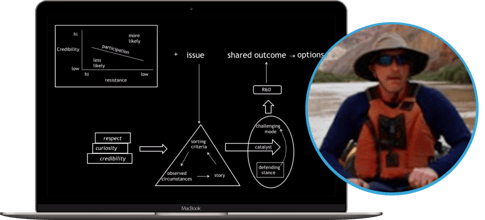Introducing a new technology platform to your staff for any business function is a daunting task, and continuous improvement software is no different. As soon as you announce that you’re bringing in a new platform, people start to worry about having to learn how to use it and how much time it’s going to add to their day. When you really think about it, that’s a pretty fair concern and goes a long way toward explaining organizational resistance to change.
In this post, we’re going to cover some tips for overcoming those initial hurdles and rolling out your continuous improvement software with the least amount of staff resistance possible. Essentially, it all revolves around “meeting people where they are,” acknowledging the current state and working toward your goal state incrementally and respectfully.
Same Requirements, Different System
Tania Lyon, Director of Organizational Performance Improvement at St. Clair Hospital in Pittsburgh, is a great example of someone who has really nailed the introduction and implementation of continuous improvement software in her organization.
One way she does this is by integrating KaiNexus into familiar processes so that it’s rolled out as an easier way to do something people are already doing, rather than an extra thing they need to do.
For example, managers at St. Clair Hospital are required to develop an annual performance improvement plan, complete with documentation forms. Lyon increased adoption of KaiNexus by keeping the core of their task the same - creating A3s, submitting documentation, analyzing results - and moving the process into KaiNexus, thereby increasing use of the system without adding any extra tasks for the managers.
This concept extends to other areas of leadership, as well. For example, on Gemba Walks, instead of keeping a paper record of their walk, people can just bring their tablet or cell phone, take a picture and upload it into their continuous improvement software. Managers already do Gemba Walks and they already look for improvements, so by having them put those improvements directly into continuous improvement software, you’re not adding any steps.
Lower the Barrier to Engagement
While it would be nice if everyone in your organization were to come into work on a pre-determined day and magically start using your new software, that is never going to happen. Curbing your expectations and making it as easy as possible for people to start using the system is key to a smooth and successful rollout.
For example, Lyon allows for improvements to be submitted by staff both online AND offline during an initial implementation, to accommodate staff that are not ready to adopt a new technology. While many users submit improvements directly into KaiNexus, others put post-it notes on a board and the managers enter in them into KaiNexus on the employee’s behalf until everyone gets more accustomed to the system.
She knows that over time, computer literacy will increase and those paper-oriented staff members will be more open to using KaiNexus, especially when it is frequently brought up in Huddles, staff meetings, and management conversations. In the meantime, though, everyone is at least aware of and engaged with the new software, even if they aren’t using it directly.
Another way to lower the barrier to engagement is to use shared workstations so that anyone can submit their improvements and get help if they need it. Eventually, the goal is for everyone to be able to submit improvements on their own, whether from a computer, email or the mobile app - but that doesn’t have to happen right away.
Positive Reinforcement
You could try nagging your staff into using your continuous improvement software, but I promise you, that isn’t going to work. Instead, try a little positive reinforcement; you’ll find that it goes a long way toward increasing adoption.
For example, Lyon brings up KaiNexus frequently in Huddles and staff meetings, reinforcing the fact that the new software will be in integral part of the improvement processes at St. Clair Hospital. Lots of our customer go so far as to keep their Huddle boards in KaiNexus, and then actually using these digital boards during the Huddles.
Lyon brings up KaiNexus in less formal settings, too; whenever someone brings up an idea, her standard response is “That’s a great idea, go put it in KaiNexus.” This is actively reshaping a positive behavior - bringing your manager ideas for improvement - into an even more positive behavior - submitting them directly into the improvement management system.
Lead by Example
We all know that people pay more attention to what you do than what you say, so it makes sense that if you incorporate the new software into your own daily work, others will follow suite.
For example, Lyon tracks key metrics in KaiNexus and expects her staff to do the same. She uses KaiNexus to plan due dates and to send notifications, which encourages her staff to communicate and follow deadlines in KaiNexus too. The more that Tania is able to emphasize that KaiNexus is important by incorporating it in her own work, the more engaged her staff will be in the software.
Regardless of how easy a new software platform is to use, people will likely still resist its adoption. Breaking down the barrier of entry for the software can be as easy as digitizing a task that is already required or creating a hybrid system for the people that need a little extra help.
For more information, watch this free webinar:
The Science Behind Resistance to Change




Add a Comment